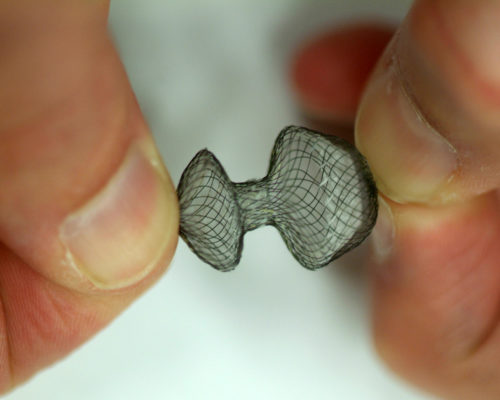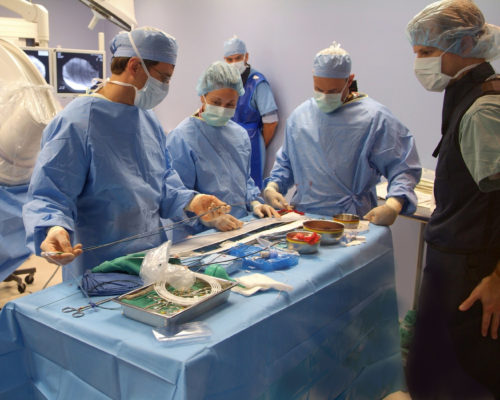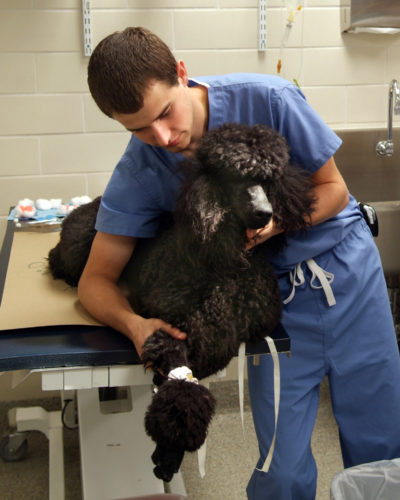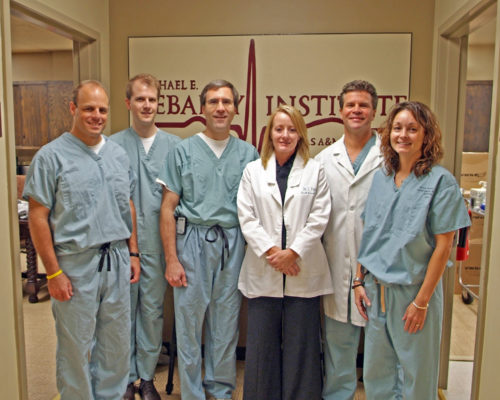Hole In Dog’s Heart Repaired at Texas A&M
COLLEGE STATION, Dec. 6, 2005 – Thanks to a rare medical procedure, a pet standard poodle has had a hole in its heart repaired by a cardiac catheterization technique performed at Texas A&M University’s College of Veterinary Medicine & Biomedical Sciences.
 |
 |
 |
 |
The ground-breaking procedure – technically called non-invasive catheter based atrial septal defect occlusion – was performed Friday for the first time ever in Texas. A procedure using a similar device was believed to have been conducted at Purdue University within the past year.
Peschi, a 5-year-old standard poodle, was born with a heart defect called an ASD – atrial septal defect. It means there’s an opening between the heart’s two upper chambers and if not repaired, the leak will likely result in the development of exercise intolerance, breathing difficulty and eventually premature death.
“We learned a lot from this experience and from here we can make a few equipment adjustments and move on,” said Dr. Sonya Gordon, a cardiologist in the Small Animal Hospital who assisted with the heart repair. She was aided by colleague Dr. Matthew Miller, also a cardiologist at the hospital.
“We’re all still learning and there’s a learning curve to this, but it has been a good day for us,” she said following the procedure.
Dr. Ronald Grifka, who has performed the same procedure hundreds of times at Texas Children’s Hospital in Houston, said that a dog’s heart is about the same size as that of a small child.
“The device is shaped sort of like an Oreo cookie with two discs at each end that serve as a wedge to block the hole in the atrial wall,” Grifka explained.
The entire procedure took about six hours to complete. Peschi went home the day after the repair and is doing well, Gordon said. “We may possibly try to schedule some of the other dogs for the procedure before Christmas,” she added.
Peschi belongs to Ronnie and Guinnette Peebles of Houston. “We believe this surgery is a stepping stone for other dogs with this type of defect,” Mrs. Peebles said. “We hope this will lead to more awareness of this rare defect.”


